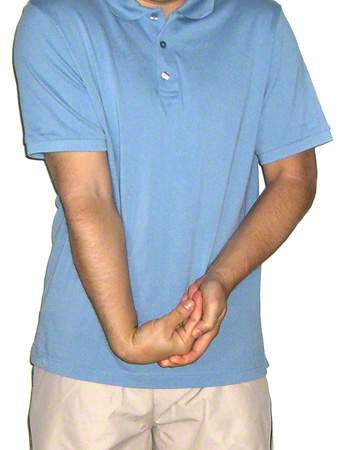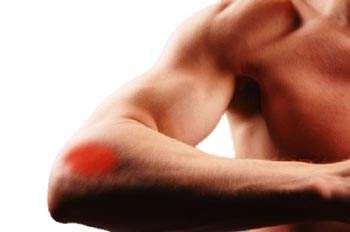Tennis elbow, also called tennis elbow by hand surgeons, is an inflammation of the tendon origin of the forearm extensor muscles on the outer humerus, on the thumb side of the elbow joint.
It is usually caused by occupational or sporting (e.g. tennis) overuse. The permanent irritation leads to a non-bacterial inflammatory reaction in the area of the periosteum (periosteum).
This inflammation of the periosteum is mainly responsible for the pain symptoms of tennis elbow.
However, in hand surgery it is also assumed that chronic cramping of the corresponding muscles plays a significant role as a cause.
Contents
Yuveo Clinic
Special features of tennis elbow treatment
It is certainly important to differentiate it precisely from other diseases that cause similar symptoms to golfer’s elbow.
Causes
Complaints
Conservative treatment
Tennis elbow surgery
If, after approximately six months of conservative treatment, there is still no reduction in tennis elbow symptoms, or if they even worsen, surgery should be considered depending on the symptoms.
The procedure can be performed on an outpatient basis at the Yuveo Clinic in Düsseldorf if there are no reasons (secondary diseases) for not doing so.
An intravenous regional anesthesia, plexus anesthesia (anesthesia in the armpit) or, in special cases, general anesthesia are possible anesthetic procedures.
In the case of tennis elbow, the origins of the muscles attached to the outer elbow (humeral cartilage) and further away from the body are detached (Hohmann surgery). The outer elbow ligaments should also be inspected without injuring them. Sometimes cartilaginous-bony changes can be removed, which certainly contribute to the symptoms.
This includes severing and obliterating the smallest nerves that supply the outer elbow area. (This procedure according to the Wilhelm method is also called denervation).
The combination of both procedures according to Hohmann and Wilhelm is preferred by many hand surgeons.
Frequently asked questions about tennis elbow therapy
What symptoms are typical of tennis elbow?
In tennis elbow, overuse of the muscles at their origins triggers a characteristic pain, which can be provoked by pressure on the above-mentioned cartilage or by a typical movement (stretching the hand).
Pain is also described when the forearm is rotated outwards.
Functionally, the arm is often enormously restricted. In advanced cases, our hand surgeons in Düsseldorf can observe a reduction in strength in the corresponding muscles.
Our hand surgeons differentiate tennis elbow (epicondylitis humeri radialis) from golfer’s elbow (epicondylitis humeri ulnaris) and other diseases when making a diagnosis.
We must also consider a possible supinator ligament syndrome, which is sometimes also present and can be misinterpreted as tennis elbow.
However, supinator ligament syndrome is a nerve compression syndrome in which a nerve is constricted (like carpal tunnel syndrome, sulcus ulnaris syndrome, Loge de Guyon syndrome, …), in which the deep branch of the radial nerve is constricted.
Furthermore , wear-related joint changes (osteoarthritis) as well as inflammatory processes and tumors can cause symptoms similar to tennis elbow.
What does conservative tennis elbow treatment look like at Hand Surgery Düsseldorf?
Conservative measures include the following components:
Among other things, ointment dressings can help to alleviate the symptoms.
Our hand surgery team also injects the muscle origins with anti-inflammatory and pain-relieving medication (local anesthetics and cortisone).
Wearing an upper arm plaster splint for immobilization or a tennis elbow sleeve are further conservative treatment options.
We also recommend trying physiotherapy to stretch and loosen the cramped and possibly shortened forearm extensor muscles.
What does minimally invasive tennis elbow surgery mean?
We are also happy to offer minimally invasive surgery for tennis elbow.
We make an incision no more than 1 cm long over the outer humeral cartilage to separate the muscles and tendon origins.
This procedure is often successful. In contrast, in severe cases an extensive procedure is necessary, in which we also examine the nerves on the ligamentous apparatus and the periosteum down to the ulnar bone.
Sometimes we even find cartilage that is invisible on X-ray, or ossifications as an expression of chronic irritation, which, if we overlook them, can continue to cause discomfort.
Our hand surgery team in Düsseldorf prefers the Hohmann and Wilhelm technique with an incision that is approx. 4 cm long, as the minimally invasive method does not provide a good overview.
What does our team of hand surgeons recommend after tennis elbow surgery in Düsseldorf?
After tennis elbow surgery, you will wear an upper arm plaster splint for approx. 14 days to immobilize your elbow. After this, you can start with careful movement exercises in the elbow joint.
Depending on the severity of the illness and the healing process, physiotherapy is sometimes useful.
We pay particular attention to good post-operative scar care, as the scars can be reddened and irritated for longer than in other regions of the body due to the mobility of the elbow.
Pain may be present for many weeks after tennis elbow surgery, but the quality of the pain should be different than before the operation.
Fact check on the OP
- Practitioners: Dr. Schumann and Dr. Schumann-Averkiou
- Anesthesia: Anesthesia in the armpit, general anesthesia if necessary
- Hospitalization: outpatient
- Follow-up treatment: Upper arm plaster splint for 14 days, slow build-up of weight-bearing, physiotherapy
Related topics and further information
Technical terms:
- Epicondylitis humeri radialis, EHR, epicondylitis humeri lateralis = tennis elbow
- Golfer’s elbow = the inside of the elbow joint (epicondylus humeri ulnaris) is affected.
- RSI (Repetitive Strain Injury) = diseases caused by repetitive strain resulting in micro-injuries
Related topics:
Further information:




